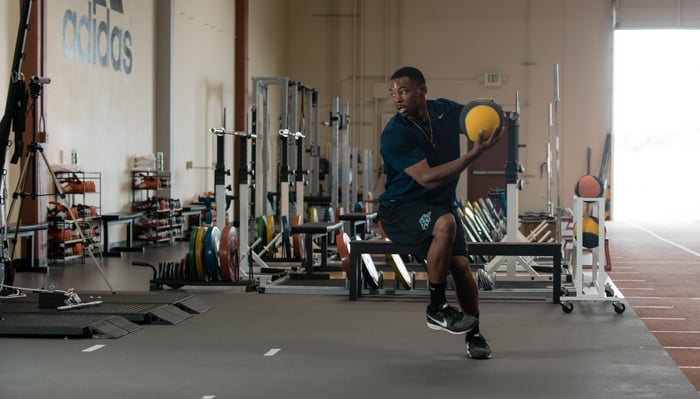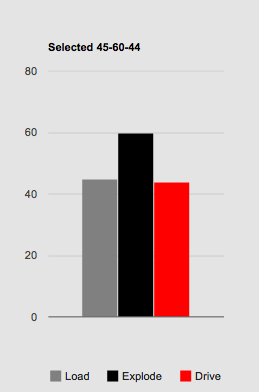
Here at Sparta, we treat training plans very similarly to the way we treat testing and evaluation. The first key is always reliability. The reliability allows us to compare movements and loading schemes (weights, sets, reps) from various locations. Sparta Performance has a set of chosen exercises that allow us to gather data on the reliability of our movements and their effects on the movement signature. Having this knowledge allows a baseline to compare against partner sites for mutual sharing and benefit. For example, if University of Kansas finds a better way to increase EXPLODE by using Hang Clean, they allow us to learn from such statistics and crowdsource the trends for use by others.
The way the plan starts to differ from testing is when you get away from choosing which particular exercises you’re athletes are going to do, and start prioritizing movements. The order in which movements are done in a plan, and with which other movements they are combined with have a huge impact on the efficacy of that plan.

The beauty of using the Movement Signature as our evaluation tool and “Compass Rose” is that the t scores for the three variables (LOAD, EXPLODE, DRIVE) dictate the most pressing needs of the athlete. We call this the hierarchy of needs. Basically, the Movement Signature variables that are lacking the most need to be addressed first.
The second thing we consider is what we call the additive effect. No matter what your athletes are doing in the gym, it will never outweigh the stimulus they are getting on the field or court. For example, we’ve found that in-season baseball players have an additive effect on DRIVE and LOAD (Movement Signature above) from all the extra rotations they are performing (swinging/ pitching).

Basketball players on the other hand have an additive effect on EXPLODE in season (movement signature above). This is most likely due to the increased stopping and starting during a basketball game, as well as the need to generate jumps without the use of a lead up (rebounding). In addition, the Movement Signature is also affected by age, sport, gender and the duration of the current training plan.
Creating the “ideal” training plan is always a balancing act so to summarize, we follow a 3 basic steps
1. Create a hierarchy of needs based on the Movement Signature; address lowest variable and the additive effect
2. Address those needs using your exercise and plan reliability
3. Evaluate your plan to signature; if it didn’t improve, look for the reasons why, and if it did, then bank it!
Regardless of the benchmarks you choose, having a way to objectively create plans will help with decision making, saving you valuable time and resources.